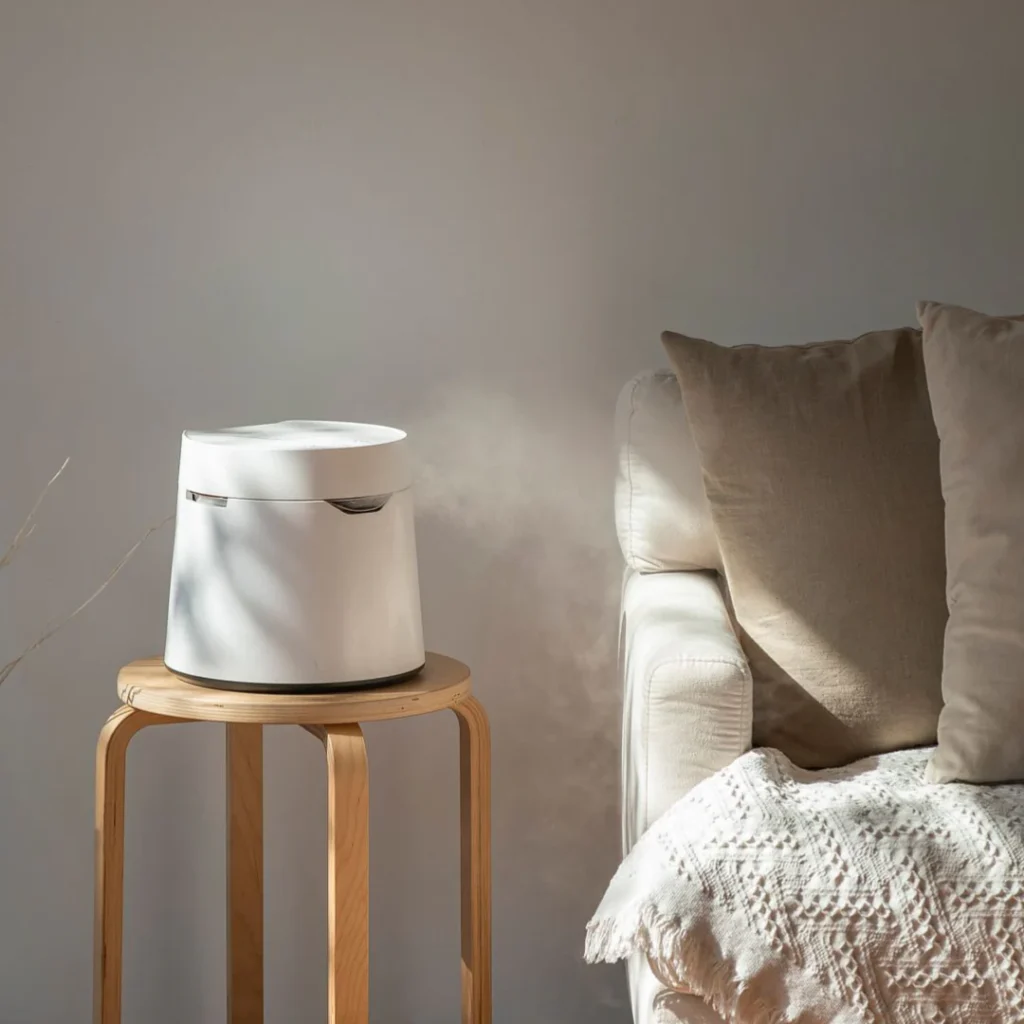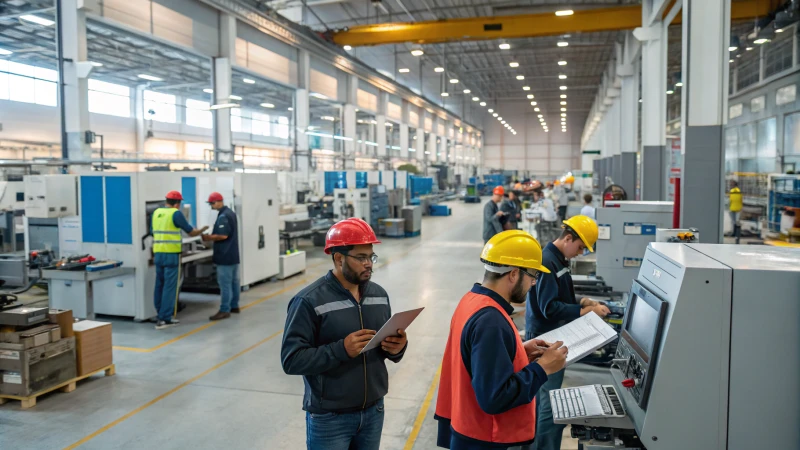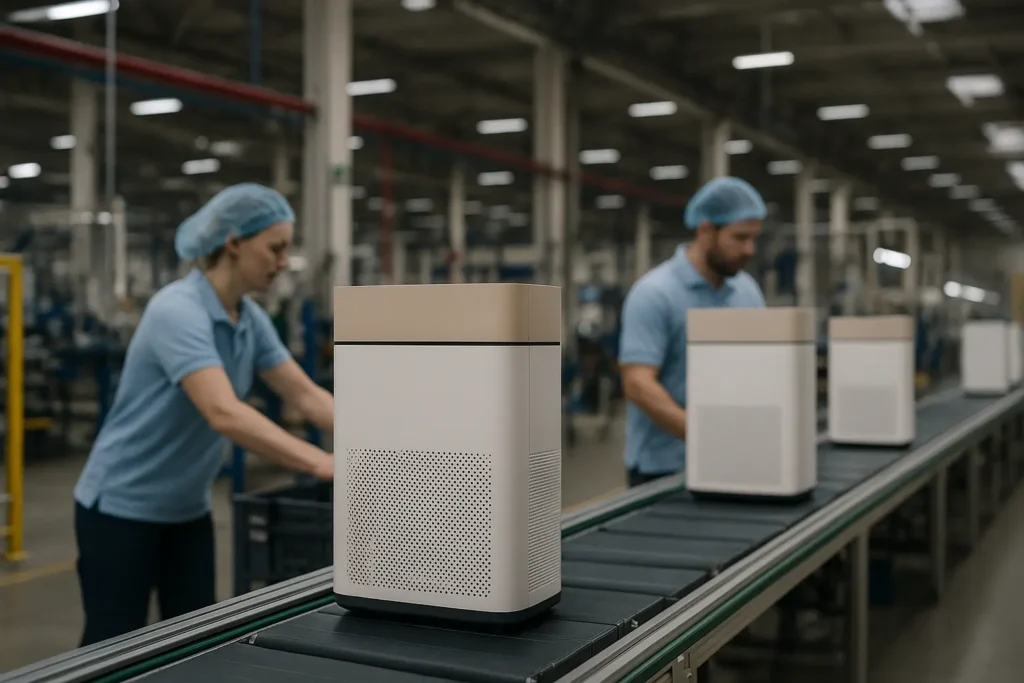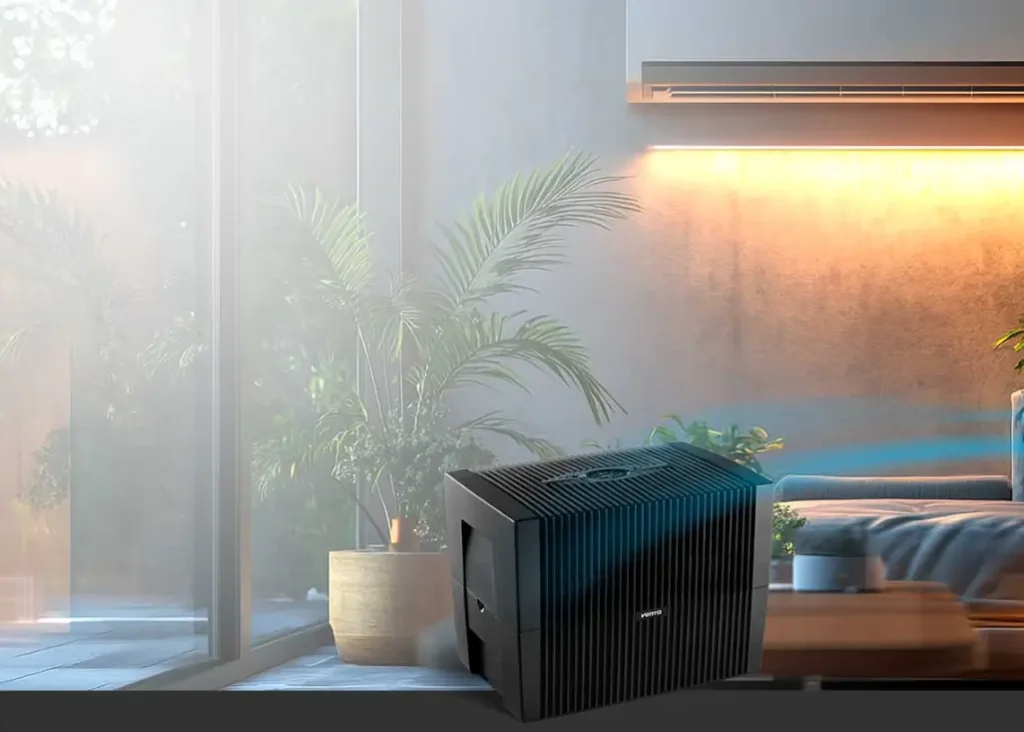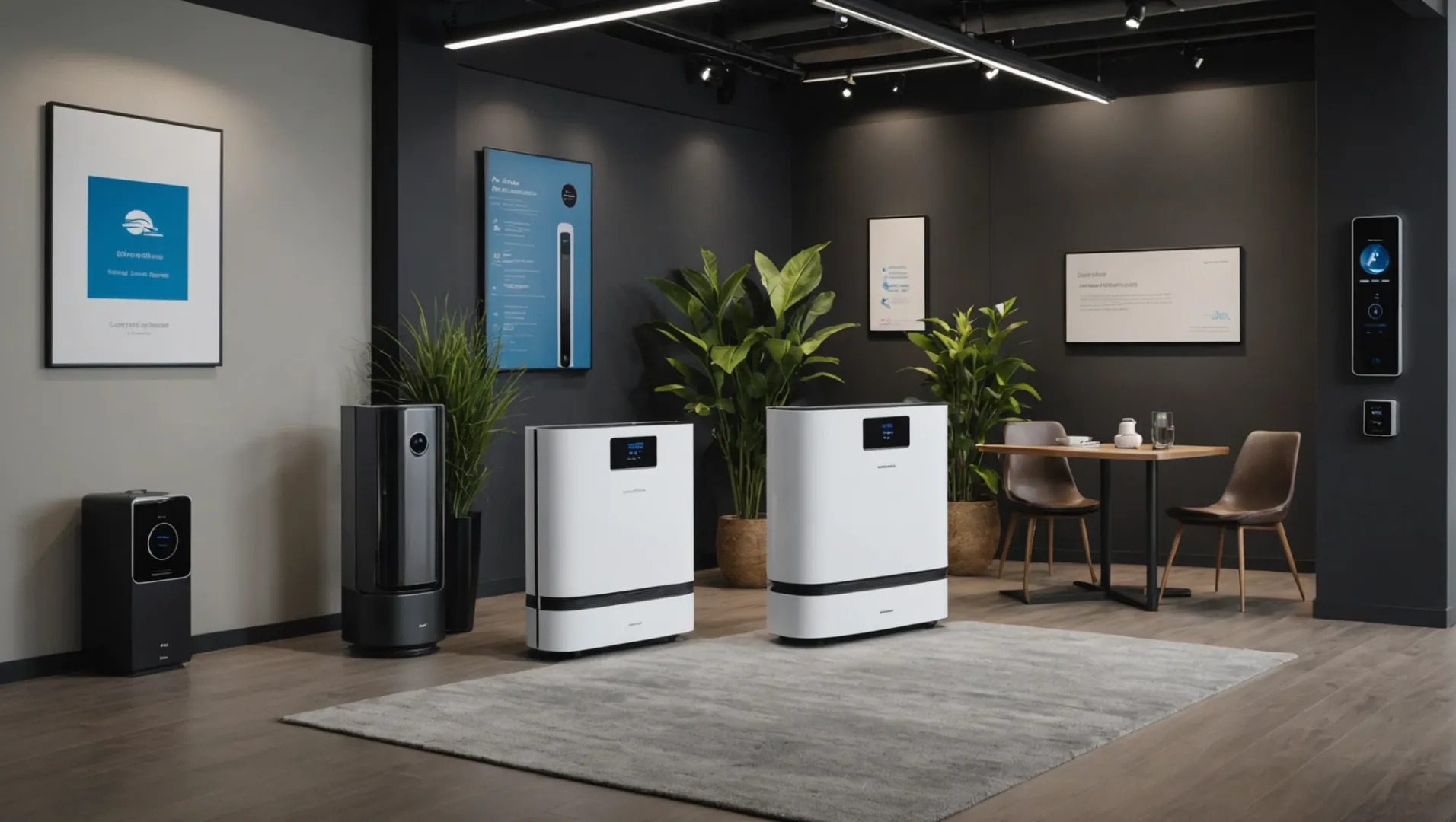
Na minha busca por um ar mais limpo, descobri que encontrar o melhor negócio num purificador de ar é mais do que apenas olhar para as etiquetas de preço. Trata-se de compreender o que está por detrás desses números.
Para comparar eficazmente os preços dos purificadores de ar entre vários fornecedores, concentre-se em caraterísticas-chave como CADRnível de ruído e tipo de filtro. Certifique-se de que avalia especificações semelhantes para efetuar uma comparação justa, tendo em conta o custo e o desempenho.
Embora o preço seja crucial, compreender as nuances das caraterísticas do purificador de ar pode realmente fazer a diferença na sua decisão de compra. Junte-se a mim para explorarmos o que realmente conta!
A CADR é a caraterística mais importante a comparar.Verdadeiro
O CADR mede a eficiência do purificador de ar, crucial para a avaliação do desempenho.
Em que caraterísticas se deve concentrar ao comparar purificadores de ar?
A escolha do purificador de ar certo requer uma atenção cuidadosa a caraterísticas específicas que afectam o desempenho e o valor.
Ao comparar os purificadores de ar, concentre-se em CADRníveis de ruído, tipos de filtros e funcionalidades inteligentes adicionais para garantir uma óptima qualidade do ar e a comodidade do utilizador.
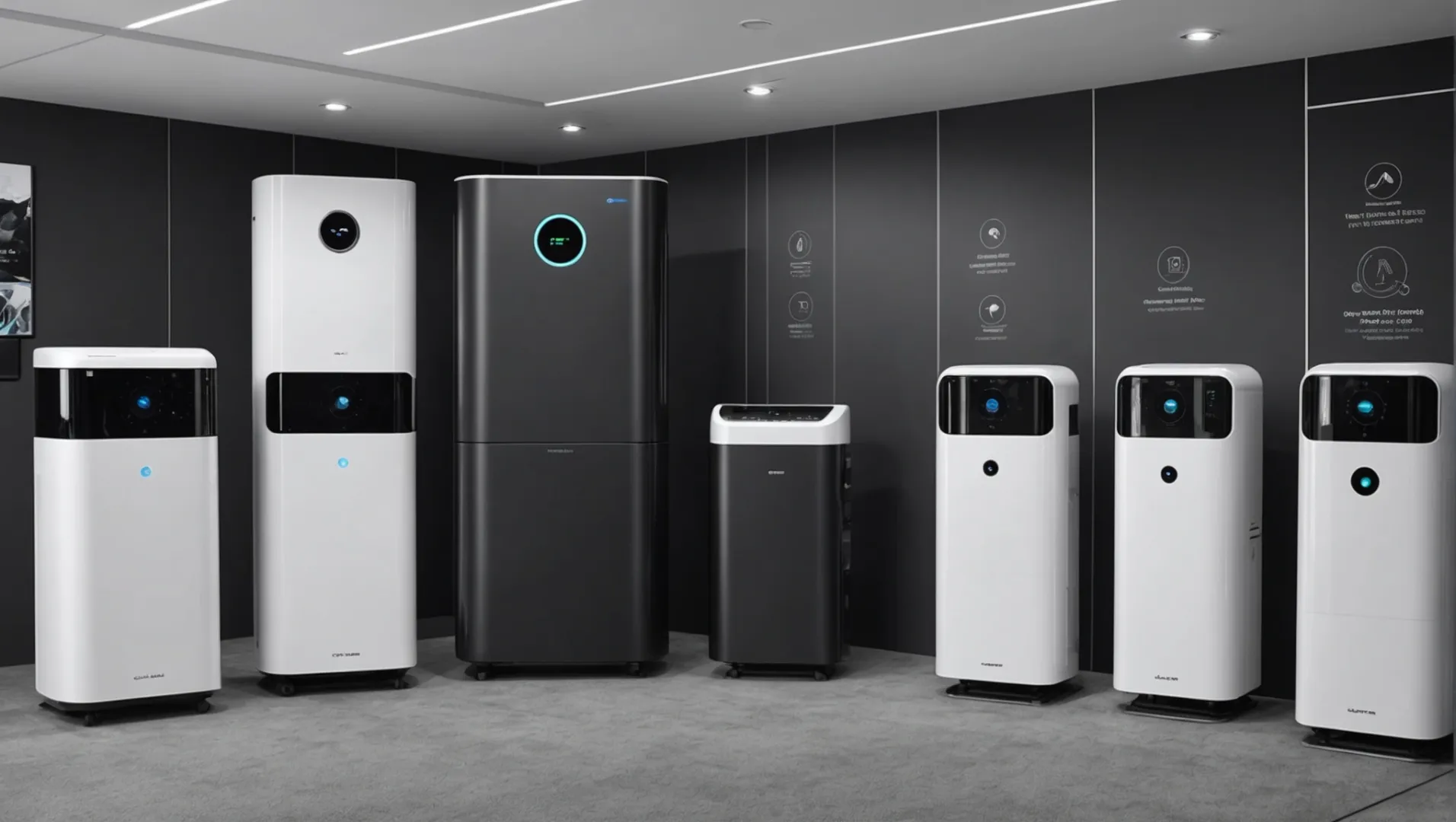
Compreensão CADR e a sua importância
A taxa de fornecimento de ar limpo (CADR) é uma medida crítica na avaliação dos purificadores de ar. Indica o volume de ar filtrado que um purificador de ar produz por minuto, afectando a eficiência com que limpa uma divisão. Um valor mais elevado CADR significa uma purificação mais rápida do ar.
Comparação CADR Os valores dos modelos com especificações de tamanho de divisão semelhantes ajudam-no a avaliar qual o dispositivo com melhor desempenho. Não esquecer, que corresponde ao CADR1 para o tamanho da divisão é essencial para uma purificação eficaz.
Avaliação dos níveis de ruído
Os níveis de ruído podem afetar significativamente o seu conforto, especialmente se o purificador de ar for utilizado num quarto ou num escritório. Verifique os níveis de decibéis fornecidos pelo fabricante. Modelos que oferecem Tecnologia de cancelamento de decibéis2 pode proporcionar um funcionamento mais silencioso, melhorando o seu ambiente sem ruídos que o distraiam.
| Modelo | Nível de ruído (dB) |
|---|---|
| Modelo A | 40 dB |
| Modelo B | 50 dB |
| Modelo C | 35 dB |
Consideração dos tipos de filtros
O tipo de filtro desempenha um papel fundamental no que respeita aos poluentes que o purificador de ar pode eliminar. Os filtros mais comuns incluem HEPAcarvão ativado e filtros de luz UV. Cada um tem um objetivo diferente:
- HEPA Filtros: Captura partículas tão pequenas como 0,3 microns, incluindo pólen, pó e fumo.
- Filtros de carvão ativado: Eliminar os odores e os gases poluentes.
- Filtros de luz UV: Mata bactérias e vírus.
Avaliar que tipos de filtros3 se alinham com as suas necessidades específicas, como a redução de alergias ou a eliminação de odores.
Caraterísticas inteligentes adicionais
Os purificadores de ar modernos estão equipados com funcionalidades inteligentes, como capacidades IoT para controlo remoto, ajustes baseados em sensores e integração com sistemas de domótica. Caraterísticas como a monitorização da qualidade do ar em tempo real ou os controlos por aplicação podem oferecer conveniência e funcionalidade significativas.
Considerar se estes funcionalidades inteligentes4 são essenciais para o seu estilo de vida e como podem melhorar a usabilidade e a eficiência globais.
Um CADR mais elevado significa uma purificação mais rápida do ar.Verdadeiro
O CADR mede o volume de ar filtrado por minuto, o que afecta a velocidade.
Os filtros HEPA eliminam os odores do ar.Falso
Os filtros HEPA captam pequenas partículas, mas não eliminam os odores.
Porque é que é importante avaliar as tecnologias específicas do fornecedor?
Compreender as tecnologias únicas oferecidas pelos fornecedores pode afetar drasticamente a sua decisão de compra.
A avaliação das tecnologias específicas do fornecedor é crucial porque influencia a qualidade do produto, a relação custo-eficácia e a inovação. Ao compreender estas ofertas únicas, pode tomar decisões informadas que se alinham com as suas necessidades e objectivos comerciais.

Compreender as ofertas tecnológicas únicas
Ao comparar purificadores de ar, não se trata apenas do custo inicial ou de caraterísticas padrão como CADR (taxa de fornecimento de ar limpo) e nível de ruído. As tecnologias específicas do fornecedor podem oferecer vantagens únicas que diferenciam um produto dos outros. Por exemplo, a tecnologia de cancelamento de decibéis da HisoAir reduz significativamente o ruído, o que pode ser um fator decisivo para os clientes que dão prioridade a um funcionamento silencioso. Esta inovação pode justificar um preço mais elevado devido ao seu valor acrescentado.
O papel da inovação na relação custo-eficácia
A inovação dos fornecedores conduz frequentemente a soluções mais económicas. Tecnologias como a tecnologia de motores de tempestade podem aumentar a eficiência, reduzindo o consumo de energia e diminuindo os custos operacionais a longo prazo. Ao avaliar estas inovações, as empresas podem determinar se o investimento inicial conduzirá a poupanças ao longo do tempo. É importante pesar os benefícios tecnológicos5 em relação ao preço para garantir um investimento sensato.
Criar relações sólidas com os fornecedores
Compreender e tirar partido das tecnologias específicas dos fornecedores pode também promover parcerias mais fortes. Quando os fornecedores vêem que valoriza as suas inovações, isso pode levar a melhores negociações de preços e colaborações, especialmente em ODM (Original Design Manufacturer). Pedido de uma lista de materiais (LISTA TÉCNICA) dos fornecedores quando se trata de grandes volumes, permite uma comparação transparente dos custos e destaca quaisquer vantagens tecnológicas únicas.
| Caraterística | Fornecedor A | Fornecedor B |
|---|---|---|
| CADR | 300 m³/h | 280 m³/h |
| Nível de ruído | 45 dB | 50 dB |
| Cancelamento de decibéis | Sim | Não |
| Tipo de filtro | HEPA | Carbono |
| Tecnologia inovadora de motores | Sim | Não |
Garantir a vantagem competitiva
Por último, a avaliação destas tecnologias garante que a sua cadeia de abastecimento se mantém competitiva. Um fornecedor com tecnologia superior pode fornecer-lhe produtos que oferecem um melhor desempenho ou caraterísticas únicas, dando-lhe uma vantagem no mercado. Esta vantagem competitiva é crucial para manter a satisfação do cliente e alcançar o sucesso comercial a longo prazo.
Ao concentrar-se em tecnologias específicas do fornecedor, não só melhora as suas ofertas de produtos, como também reforça a sua posição no mercado.
As tecnologias específicas dos fornecedores podem reduzir os custos operacionais.Verdadeiro
Inovações como a tecnologia do motor de tempestade aumentam a eficiência, reduzindo os custos.
A avaliação das tecnologias dos fornecedores não afecta a qualidade do produto.Falso
A compreensão destas tecnologias influencia a qualidade, a relação custo-eficácia e a inovação.
Como é que o custo total influencia a sua decisão de compra de um purificador de ar?
Ao selecionar um purificador de ar, é crucial considerar o custo total e não apenas o preço inicial.
O custo total de um purificador de ar inclui o preço de compra, as despesas de manutenção e os custos operacionais. A avaliação de todos estes factores assegura a seleção de um modelo que se enquadre no seu orçamento a longo prazo, satisfazendo simultaneamente as suas necessidades de qualidade do ar.
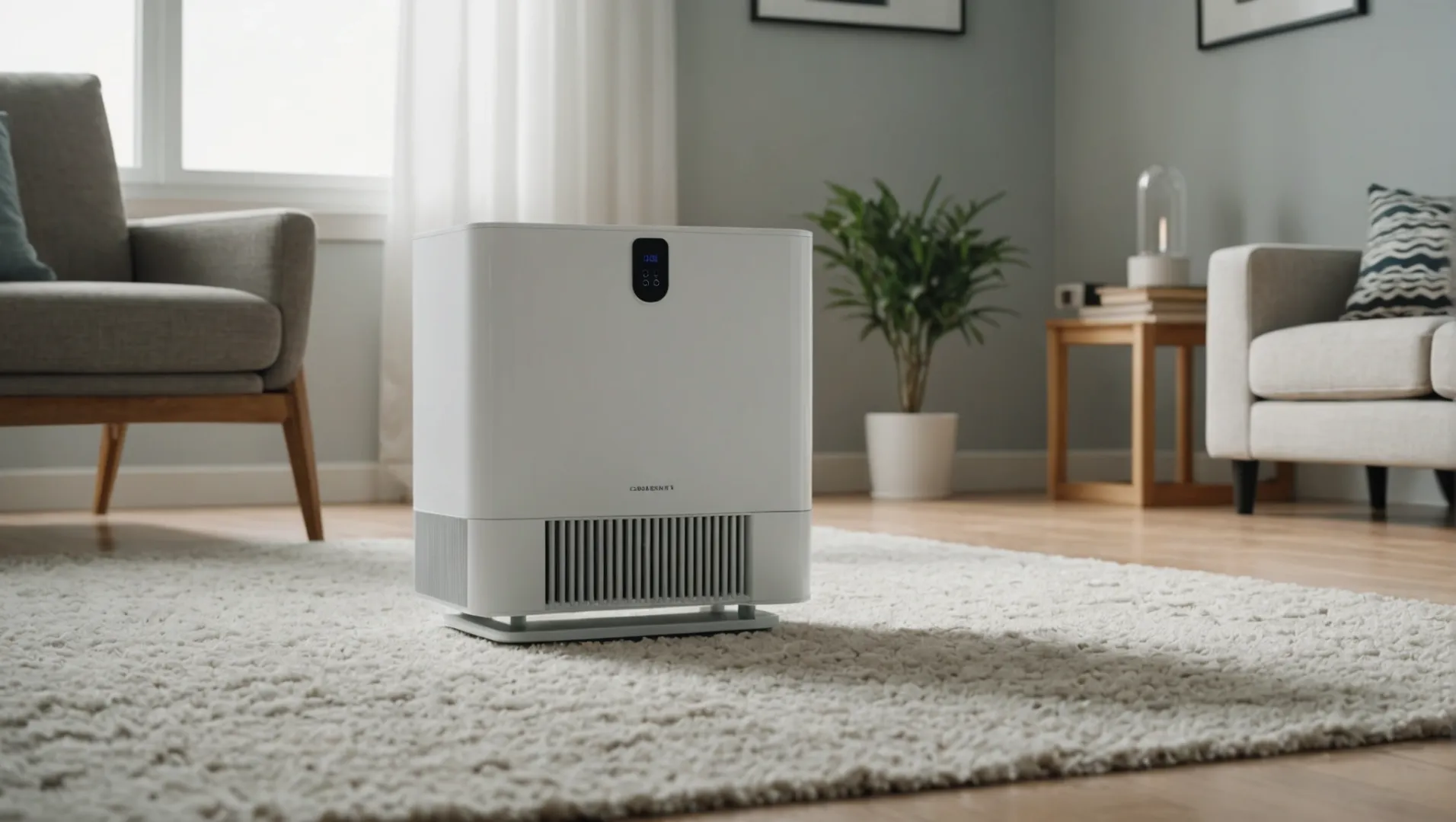
Compreender os elementos do custo total
Ao avaliar os purificadores de ar, considere três componentes principais de custo:
- Preço de compra inicial: Este é o custo inicial que paga para ter o purificador de ar. Varia significativamente em função de caraterísticas como CADR (taxa de fornecimento de ar limpo), nível de ruído e tipo de filtro. Uma taxa CADR pode significar um preço mais elevado, mas também indica um melhor desempenho.
- Despesas de manutenção: A manutenção regular é crucial para um desempenho ótimo. Considere o custo da substituição dos filtros, que pode variar muito consoante a marca e o modelo do purificador. Alguns modelos oferecem filtros permanentes que precisam de ser limpos em vez de substituídos, o que permite poupar dinheiro ao longo do tempo.
- Custos operacionais: Isto inclui o consumo de eletricidade. Os modelos energeticamente eficientes podem ter um custo inicial mais elevado, mas poupam dinheiro a longo prazo, reduzindo as suas facturas de energia.
O papel das tecnologias específicas do fornecedor
Alguns fornecedores oferecem tecnologias únicas que podem afetar o custo total. Por exemplo, O sistema HisoAir6 A Decibel Cancellation Technology não só reduz o ruído, como também pode contribuir para um menor consumo de energia. Do mesmo modo, a sua tecnologia Storm Motor Technology poderá aumentar a eficiência do caudal de ar, reduzindo potencialmente os custos operacionais.
Importância da avaliação do custo ao longo do tempo
Avaliar o custo total implica olhar para além das despesas imediatas. Um modelo com um preço de compra baixo mas com custos de manutenção elevados pode ser mais caro a longo prazo do que uma alternativa mais cara com necessidades mínimas de manutenção.
| Componente de custo | Considerações sobre exemplos |
|---|---|
| Preço de compra inicial | Caraterísticas como CADR, capacidades IoT e tipos de sensores |
| Despesas de manutenção | Frequência e custos de substituição do filtro |
| Custos operacionais | Consumo de energia e classificações de eficiência |
Tirar partido do custo total para uma melhor negociação com os fornecedores
Se tiver um volume de encomendas significativo ou se estiver envolvido numa ODM projeto, solicitando um LISTA TÉCNICA (Bill of Materials) dos fornecedores pode ser vantajoso. Esta transparência permite negociações de preços mais agressivas e informadas.
Ao avaliar exaustivamente estes factores, garante que a escolha do seu purificador de ar está de acordo com o seu orçamento e com os seus objectivos de qualidade do ar, o que acaba por conduzir a uma experiência de compra mais satisfatória.
Um CADR mais elevado indica um melhor desempenho do purificador de ar.Verdadeiro
O CADR mede a eficiência de um purificador de ar na remoção de poluentes.
Os filtros permanentes custam sempre mais do que os substituíveis.Falso
Os filtros permanentes podem poupar dinheiro ao longo do tempo, uma vez que requerem limpeza e não substituição.
Que papel desempenham as críticas e as classificações no seu processo de comparação?
No movimentado mercado dos purificadores de ar, as críticas e classificações servem de luz orientadora, iluminando o caminho para uma decisão de compra sensata.
As críticas e classificações proporcionam experiências de utilizador em primeira mão e opiniões de especialistas, ajudando-o a avaliar a fiabilidade e o desempenho do produto. Destacam problemas e vantagens comuns, assegurando um processo de decisão bem informado.

Compreender a influência do feedback dos utilizadores
Na atual era digital, as críticas e classificações tornaram-se parte integrante do processo de compra. Oferecem informações genuínas de pessoas que já utilizaram o produto. Ao tê-las em conta, obtém-se uma compreensão mais clara do desempenho real de um purificador de ar, do seu potencial questões7e caraterísticas de destaque.
Tipos de avaliações: Utilizador vs. Especialista
-
Comentários de utilizadores: Estes fornecem feedback autêntico de utilizadores comuns. Destacam frequentemente aspectos práticos, como a facilidade de utilização, os desafios de manutenção ou as experiências de serviço ao cliente.
-
Comentários de especialistas: Frequentemente encontradas em sites de tecnologia ou de consumidores, estas análises aprofundam as especificações técnicas, oferecendo comparações com modelos semelhantes. Podem explorar aspectos como CADR8 e a longevidade do filtro em mais pormenor.
Avaliar as recensões de forma crítica
Nem todas as avaliações são iguais. Algumas podem ser tendenciosas ou incentivadas. Portanto, é crucial:
- Procurar padrões: Se várias críticas mencionarem uma má qualidade de construção ou um funcionamento ruidoso, estas podem ser preocupações legítimas.
- Verificar a fonte: Verifique a credibilidade da plataforma de avaliação. As fontes fiáveis têm frequentemente uma mistura de comentários positivos e negativos.
Classificações: Uma visão geral rápida
As classificações fornecem um retrato da satisfação do cliente. Um produto com uma classificação elevada indica geralmente fiabilidade e eficiência. No entanto, é essencial:
- Considere o número de classificações. Uma classificação de cinco estrelas de dez utilizadores é menos fiável do que uma de mil.
- Procure classificações recentes para garantir que o feedback reflecte o modelo ou versão atual do purificador de ar.
Tirar partido da reputação na tomada de decisões
Uma vez que está a comparar com diferentes fornecedores, uma dica para si é que pode dizer ao fornecedor A que está a comparar o preço e a qualidade com o fornecedor B, o que pressionará o seu fornecedor e poderá obter um preço melhor. Mas, para tomar uma decisão, deve recolher algumas informações sobre a reputação do potencial fornecedor, o que é essencial para reduzir o risco.
Conclusão
Ao ponderar o custo em função da qualidade e da tecnologia, asseguro uma compra inteligente que satisfaz as minhas necessidades em termos de qualidade do ar.
-
Garante a purificação ideal do ar fazendo corresponder o CADR ao tamanho da divisão..: Este artigo descreve os três passos essenciais para identificar o tamanho adequado de um purificador de ar e a forma como uma métrica chamada CADR pode ajudar neste processo. ↩
-
Saiba mais sobre as tecnologias para um funcionamento mais silencioso do purificador de ar..: Os Purificadores de Ar HiSo utilizam a Tecnologia Decibel Cancellation™, permitindo a utilização de filtros menos densos. As partículas carregadas aderem mais facilmente, reduzindo a necessidade de ... ↩
-
Ajuda a identificar os melhores tipos de filtros para as suas necessidades..: Quais são os diferentes tipos de filtros de ar? - Filtros HEPA - Filtros de luz UV - Filtros electrostáticos - Filtros laváveis - Filtros de meios de comunicação - Filtros de vidro fiado ... ↩
-
Descubra como os recursos inteligentes podem melhorar a usabilidade do purificador de ar..: No entanto, um purificador bem concebido pode capturar praticamente todos os alergénios transportados pelo ar, como o pólen e os esporos de bolor, bem como bactérias, vírus e ... ↩
-
Explore como as inovações reduzem os custos e melhoram a eficiência dos purificadores de ar..: Esta abordagem inovadora reduz simultaneamente a matéria particulada desde o tamanho de nanopartículas até tamanhos maiores, até 99%, bem como remove ... ↩
-
Explore como esta tecnologia reduz o ruído e poupa energia..: Os Purificadores de Ar HiSo utilizam a Tecnologia Decibel Cancellation™, permitindo a utilização de filtros menos densos. As partículas carregadas aderem mais facilmente, reduzindo a necessidade ... ↩
-
Descubra as potenciais armadilhas antes de comprar um purificador de ar..: Um purificador de ar com uma manutenção inadequada terá filtros sujos ou entupidos, motores avariados e outros problemas que afectam o seu funcionamento geral. ↩
-
Saiba por que razão o CADR é crucial para a eficiência do purificador de ar..: A escolha de um purificador de ar com uma classificação CADR elevada garante a sua eficácia na limpeza do ar de poluentes, tais como pó, pólen, fumo, ... ↩



